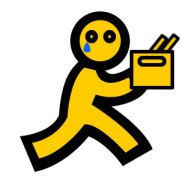
Rather than file another navelgazing commentary, VentureBeat collected crib notes of all the factoids you need to know about the deal. Print it out and pocket it for tonight’s industry mixers.
[aditude-amp id="flyingcarpet" targeting='{"env":"staging","page_type":"article","post_id":146058,"post_type":"story","post_chan":"none","tags":null,"ai":false,"category":"none","all_categories":"business,","session":"B"}']The Past
- AOL bought Time Warner for $164 billion — more than the current market value of Google — on February 11, 2000.
- At the time of the merger AOL’s dot-com-era market value was $165 billion. The combined value of AOL Time Warner was $240 billion.
- How much money is $240 billion? The gross domestic output of Los Angeles County that year was $350 billion.
- At the time, chairman Steve Case promised a company for “the Internet century.”
- Hotshot Merrill Lynch analyst Henry Blodget wrote that AOL Time Warner would provide “the operating system for everyday life.”
- The operating system for everyday life. Yes, we were that stupid in February 2000.
- By September 2000, the infighting among execs at the oversized mismatch was more interesting than anything on its WB television channel. Frank Rose’s story for Wired back then is a good revisit to forgotten names like Bob Pittman and Richard Parsons.
The Present
AI Weekly
The must-read newsletter for AI and Big Data industry written by Khari Johnson, Kyle Wiggers, and Seth Colaner.
Included with VentureBeat Insider and VentureBeat VIP memberships.
- Today, AOL’s Internet access business is profitable.
- By contrast, Time Inc. suffered a 40 percent drop in revenue this past quarter.
- Time Warner’s current market cap is $36 billion. The newly spun-off AOL is valued at $2.5 billion.
- AOL CEO Tim Armstrong, hired away from Google, says his strategy is “Content, ads and communication.”
- Also, he plans 5,000 layoffs.
- “No more Hail Marys” is Armstrong’s catchphrase. Meaning he won’t take cash from the moneymaking Internet access business to fund risky new products like 2005-era Bebo, a social networking site most Internet users have never seen.
- Armstrong says unique monthly visitors will be the metric by which he measures success. Well, that and making money.
- The Wall Street Journal calls Armstrong’s plan “a strategy centered on becoming the top creator of news, information, entertainment and other digital content.” Note that word: Creator. Unlike Google, Microsoft and Nokia, AOL plans to continue creating content rather than just reselling it.
The Money
- AOL now trades on the New York Stock Exchange under the symbol AOL, which goes back to November 27th. Shares languished at just above $23 all day today, but popped up to $23.67 at closing time.
- Buy or sell AOL? Analysts overwhelmingly suggest you wait.
- VentureBeat’s take: Everything wrong with AOL has already been factored into the price. What will move the needle on NYSE:AOL going forward is whether or not Armstrong can grow unique users as promised. Twitter has proven that if a company becomes a people magnet, investors’ dollars will follow.
VentureBeat's mission is to be a digital town square for technical decision-makers to gain knowledge about transformative enterprise technology and transact. Learn More
